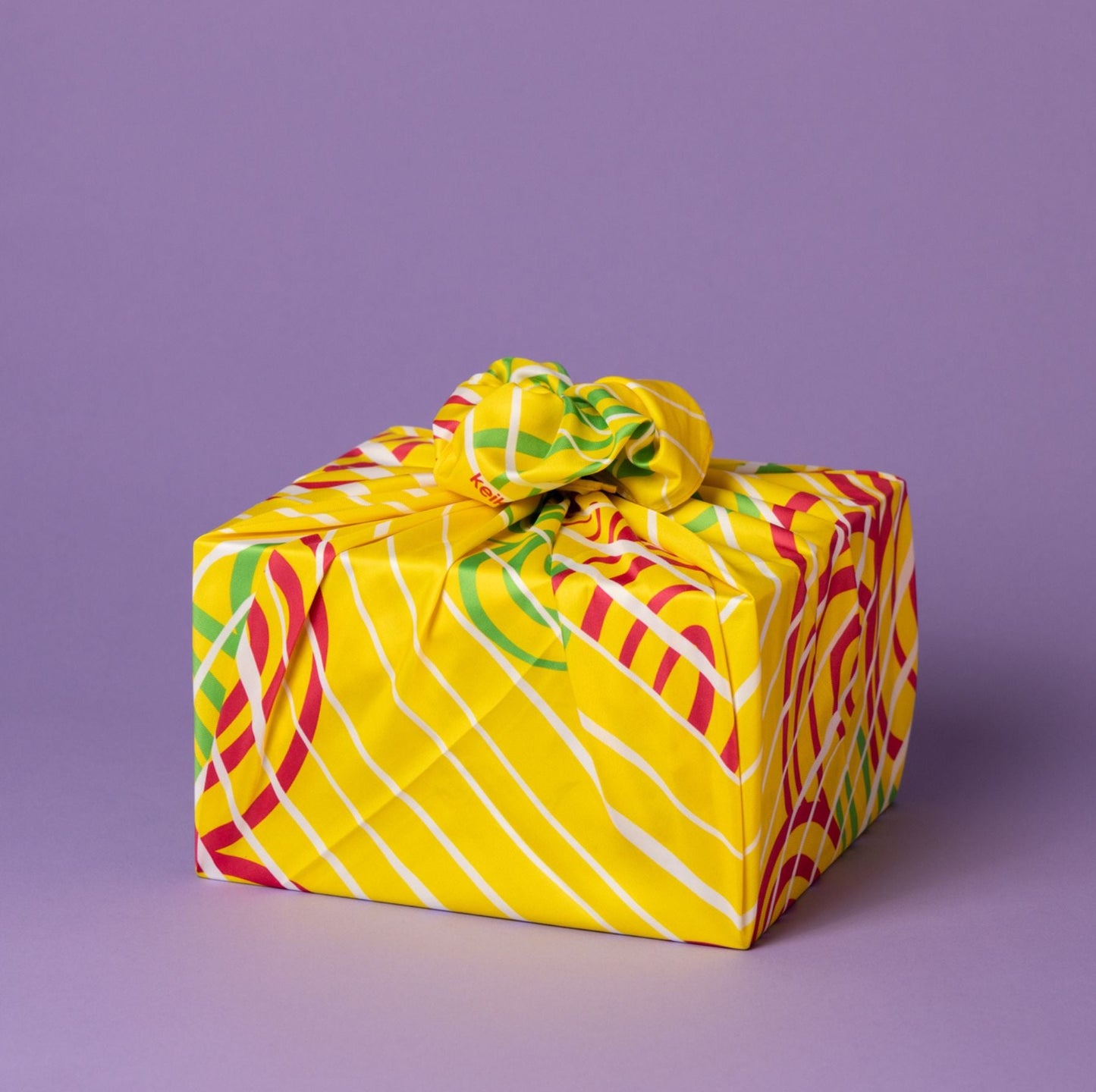
Who Invented Wrapping Paper? The History of Gift Wrapping
Gift wrapping has long been a cherished tradition, adding an extra layer of thoughtfulness to the act of giving. Its history is a fascinating journey through time and cultures, reflecting evolving materials, customs, and meanings. In this blog post, we’ll explore the history of gift wrapping, its cultural significance around the world, and how it connects to Keiko Furoshiki’s mission to bring eco-friendly reusable wrapping to modern gift-givers.
The Origins of Gift Wrapping: Practical Beginnings
Gift wrapping dates back thousands of years, with roots in both practical and ceremonial practices. In ancient China during the Tang Dynasty (618–907 CE), handmade paper was used to wrap gifts, symbolizing respect and reverence for the recipient. Around the same time, in Japan and Korea, fabric was widely used for wrapping.

In Japan, the use of square cloths evolved into furoshiki, a versatile wrapping method with roots in ancient Japan and popularized in the Edo period (1603–1868). Furoshiki served both practical and symbolic purposes, making the wrapping as significant as the gift itself. Similarly, in Korea, bojagi—a traditional square cloth—was used for wrapping gifts, food, and important items. The similarities between bojagi and furoshiki are striking, as both represent reusable and meaningful approaches to gift wrapping that emphasize sustainability and care.
The Special Touch of Fukusa: Ceremonial Wrapping
Another unique aspect of Japanese wrapping traditions is fukusa, a square piece of silk or fine fabric often used in ceremonial contexts, particularly for gift-giving at weddings or formal events. Unlike furoshiki, fukusa isn’t always tied around the item; instead, it’s draped over the gift as a protective and decorative covering. The ornate patterns and elegant designs of fukusa often carry symbolic meanings, such as wishes for prosperity or happiness.
By incorporating both furoshiki and fukusa, Japanese culture highlights the importance of intention and artistry in the act of giving.
The Birth of Commercial Wrapping Paper
Fast forward to the early 20th century, the modern concept of decorative wrapping paper emerged in Kansas City, Missouri. In 1917, the Hall brothers—founders of Hallmark—ran out of tissue paper during a busy holiday season. As a quick fix, they began selling colorful French envelope linings as wrapping paper, and the idea was an instant success.

By 1919, Hallmark introduced its first line of commercial wrapping paper, transforming gift wrapping into a decorative art form. This innovation marked a turning point, making gift wrapping accessible, affordable, and widely embraced in Western culture.
It’s worth noting the beautiful connection between Hallmark's Kansas City roots and Keiko Furoshiki, also based in Kansas City. While Hallmark popularized disposable wrapping paper, Keiko Furoshiki brings the focus back to reusable, sustainable gift wrapping traditions with roots in Japanese culture.
When Boxes and Bags Entered the Scene
Gift boxes and bags are relatively recent additions to the gift-wrapping landscape. Boxes became common in the mid-20th century as industrial manufacturing made sturdy, decorative boxes more accessible. These boxes served both practical and aesthetic purposes, offering protection for fragile items while adding an elegant presentation.

Gift bags gained popularity in the 1980s, especially for their convenience. Hallmark, once again, played a key role in popularizing gift bags. They became a favorite for those who wanted a quick yet attractive way to present gifts, requiring no tape or intricate folds.
While boxes and bags provide convenience, they’ve also contributed to the rise of single-use packaging. This makes reusable options like furoshiki more appealing for today’s eco-conscious gift-givers.
Sustainability and the Revival of Fabric Wrapping
The rise of disposable wrapping paper, boxes, and bags brought convenience but also environmental challenges. Every year, millions of tons of wrapping materials end up in landfills. As awareness of sustainability grows, traditions like furoshiki are experiencing a revival.
At Keiko Furoshiki, we’re inspired by these timeless traditions. Our reusable wraps are made from eco-friendly recycled polyester, featuring vibrant designs that make the wrapping as cherished as the gift itself. Much like the furoshiki of old, our wraps are versatile, beautiful, and designed to be used again and again.

Global Wrapping Traditions: A Common Thread
Gift wrapping traditions vary widely across cultures, but they share a universal desire to enhance the act of giving:
- India: Gifts are often wrapped in colorful fabrics called bandhani, featuring intricate tie-dye patterns. These cloths, like furoshiki and bojagi, are reusable and add cultural significance to the gift.
- The Middle East: In ancient times, ornate textiles were used to wrap gifts, reflecting wealth and respect.
- Western Europe: Wrapping shifted from fabric to paper during the Renaissance, with decorative paper becoming a symbol of sophistication.
These traditions highlight a shared appreciation for thoughtful presentation, whether through paper, fabric, or other materials.

Wrapping Up: A Thoughtful Future
The history of gift wrapping reflects both cultural diversity and shared human values. From the practical origins of furoshiki to its vibrant expression today, fabric gift wrapping has evolved. Likewise, we love the story of the Hall brothers creating wrapping paper out of necessity and adding beauty to every gift that left their shop.
As we move toward a more sustainable future, Keiko Furoshiki celebrates these rich traditions by offering modern solutions rooted in history. By choosing reusable fabric wraps, we can give gifts that are as thoughtful to the planet as they are to our loved ones.
Explore our collection of furoshiki wraps and learn creative ways to incorporate this timeless tradition into your next gift-giving experience. Together, we can honor the past while embracing a more sustainable future.























